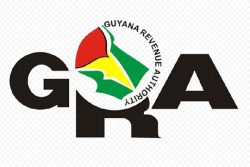The increase in the global demand for grain pushed rice earnings to US$68M from the export of 247,111 metric tonnes (MT) at the end of November compared to US$49M earned from the export of 183,000 MT for the same period last year.
At press briefing yesterday in the Ministry of Agriculture Boardroom Minister Robert Persaud said that with the global demand for grains like rice increasing Guyana was a critical market to supply Caricom and traditional markets like the European Union (EU) as well as new ones. Demand for rice, Persaud said, seemed to be outstripping the ability to supply.
Rice production in the first crop this year was 168,902 MT and the second crop was 128,260 MT for a projected total of 297,162 MT. In 2008, the first crop is projected at 168,118 MT and the second crop at 173,544 MT for a total of 341,662 MT, valued at US$67.2M. Approximately 70% of the projected acreage for the first crop of 2008 is already being prepared.
The minister said that the prices for a metric tonne could increase next year and this meant opportunities for farmers. At the start of the year, a metric tonne of cargo rice was US$285, but moved to the US$325 mark at some mills. As a result, farmers enjoyed paddy prices this year of between $2,700 and $2,800 per bag with an average of $2,200, as compared with the US$265 per MT for cargo rice last year.
The EU and Caricom continued to be Guyana’s main markets with exports of 50,000 MT to Jamaica surpassing the averages of the last four years, Persaud said. Holland imported 63,847 MT, Portugal 50,330 MT and Jamaica 49,007 MT.
With regard to exports to Caricom, Persaud said there should be full compliance with the Common External Tariff (CET) that must be applied to extra-regional imports if it was not waived. “We will not budge on that,” he said. Caricom countries had indicated an interest in buying Guyana’s rice because of the rising cost of food, but the ministry “wants this to be a long-term commitment,” Persaud said. He said many farmers who had retired rice lands were now reactivating them. The current rice land under cultivation amounted to 72,000 hectares or 177,840 acres, but this was projected to become 80,000 hectares or 197,600 acres by the 2009 Spring crop.
Owing to the increased rice production next year Persaud said discussions had been held with the Guyana Rice Development Board (GRDB) on seed production after complaints had been received from farmers. He told the media that the Burma Rice Research Station had quantity and quality shortfalls and that some of the problems were manmade. The minister said that he had asked for both technical and disciplinary action to be taken as a result. He also said that Burma would receive more technical facilities, but the station had to address its problems.
GRDB Manager Jagnarine Singh also attended the meeting.
GRDB
re-organisation
According to the ministry, following a consultation process a plan to re-organise the GRDB had been pursued in order to improve its efficiency, competitiveness and delivery of services. This included a ministerial report on how the proposed re-organisation would meet the changes in the global rice sector. As part of this process, the GRDB would be required to direct attention to institutional development, technical services, operational efficiencies, transparency of action through communication planning and client-driven modus operandi.
A submission is being made to Cabinet seeking endorsement for the proposed amendments, which involve changes in strategies, policy, management and operation. Policy shifts include the export licensing process, paddy trade regulations and mill licensing process.








